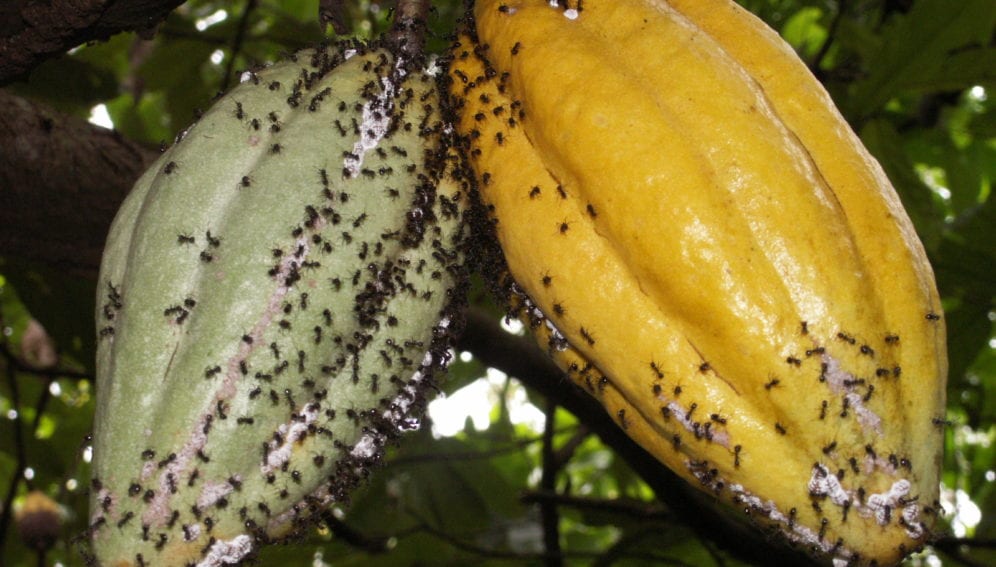By: Yao-Hua Law
Send to a friend
The details you provide on this page will not be used to send unsolicited email, and will not be sold to a 3rd party. See privacy policy.
[KUALA LUMPUR] Native ants living in cacao trees in Indonesia that are often seen as pests in fact seem to boost their yields, a study suggests.
Scientists from Germany, Indonesia and Sweden studying how ant communities affect cocoa yields in Sulawesi found that trees with abundant native ants (Dolichoderus sp.) produced the best yields. In contrast, the yields of cacao trees where ants were excluded were 27 per cent lower and those in which an invasive, foreign ant species (Philidris sp.) were introduced had yields that were 34 per cent lower, the study says.
The results were published last week (4 December) in Proceedings of the Royal Society B.
“Translating scientific results into practice can be difficult despite vigorous research.”
Stacy Philpott, University of California
Arno Wielgoss, a graduate researcher from the University of Göttingen, Germany, and the lead scientist of the 16-month study, tells SciDev.Net that ants live in a mutualistic partnership with the mealybugs — insects that suck plant nutrients and excrete sugar to their guardian ants. But they also protect the cocoa pods from even more destructive pests such as cocoa pod borers and Helopeltis bugs.
The invasive Philidris ants transmit the fungus-like plant pathogen Phytophthora sp. and so the heaviest yield loss, according to the study. These ants collect pieces of Phytophthora-infected cocoa pods to build protective tents over the mealy bugs, it says. The study says that Philidris ants and their tent materials harbour infectious Phytophthora spores with which the ants contaminate fresh cocoa pods.
Indonesia is the world’s third biggest cocoa producer. But increased pest attacks and aging trees have slashed its production this year.
Worldwide, cocoa farmers struggle against severe but geographically limited pest infestations. Ants, which form part of the complex network of life in cocoa farms, are often seen as pests.
Farmers often dislike ants, says Stacy Philpott, an associate professor in agroecology at the University of California, Santa Cruz, who studies insects in another tree crop, coffee. She says that the study is important in advancing the understanding of the ecological roles that ants play.
Wielgoss warns that insecticide spraying could hasten Philidris dominance as “insecticides harm other ant species more than Philidris that are protected in their tents”. The spread of Philidris, he adds, would also be likely to aggravate Phytophthora infection.
Despite this, the effects of having Dolichoderus ants may vary, as a Malaysian Cocoa Board officer says that untreated cacao trees produce only half the yields of trees with ant treatment.
Philpott says: “Translating scientific results into practice can be difficult despite vigorous research. Farmers face many challenges and farmers who manage ant communities are also managing pests.”
This article has been produced by SciDev.Net’s South-East Asia & Pacific desk.
Link to abstract in Proceedings of the Royal Society
References
Proceedings of the Royal Society B doi: 10.1098/rspb.2013.2144 (2013)














